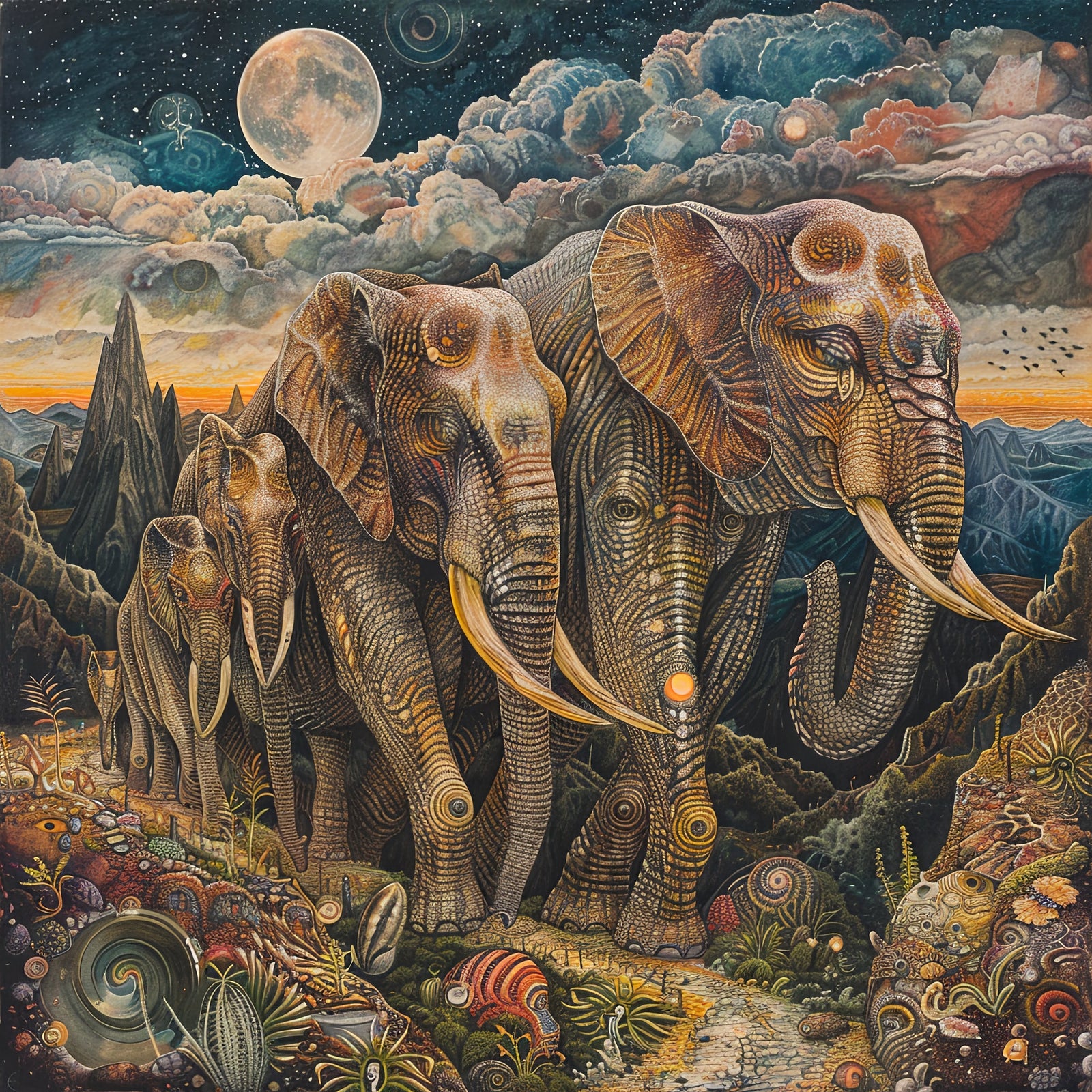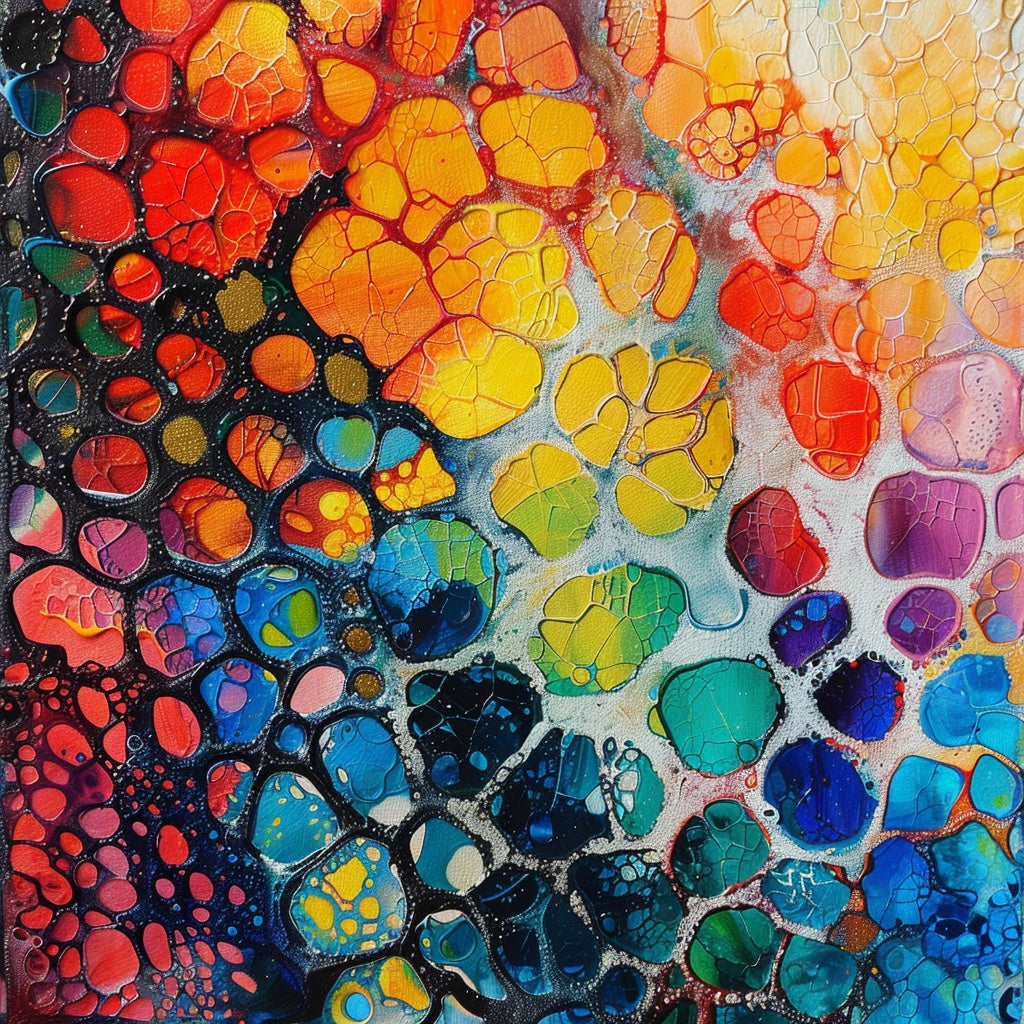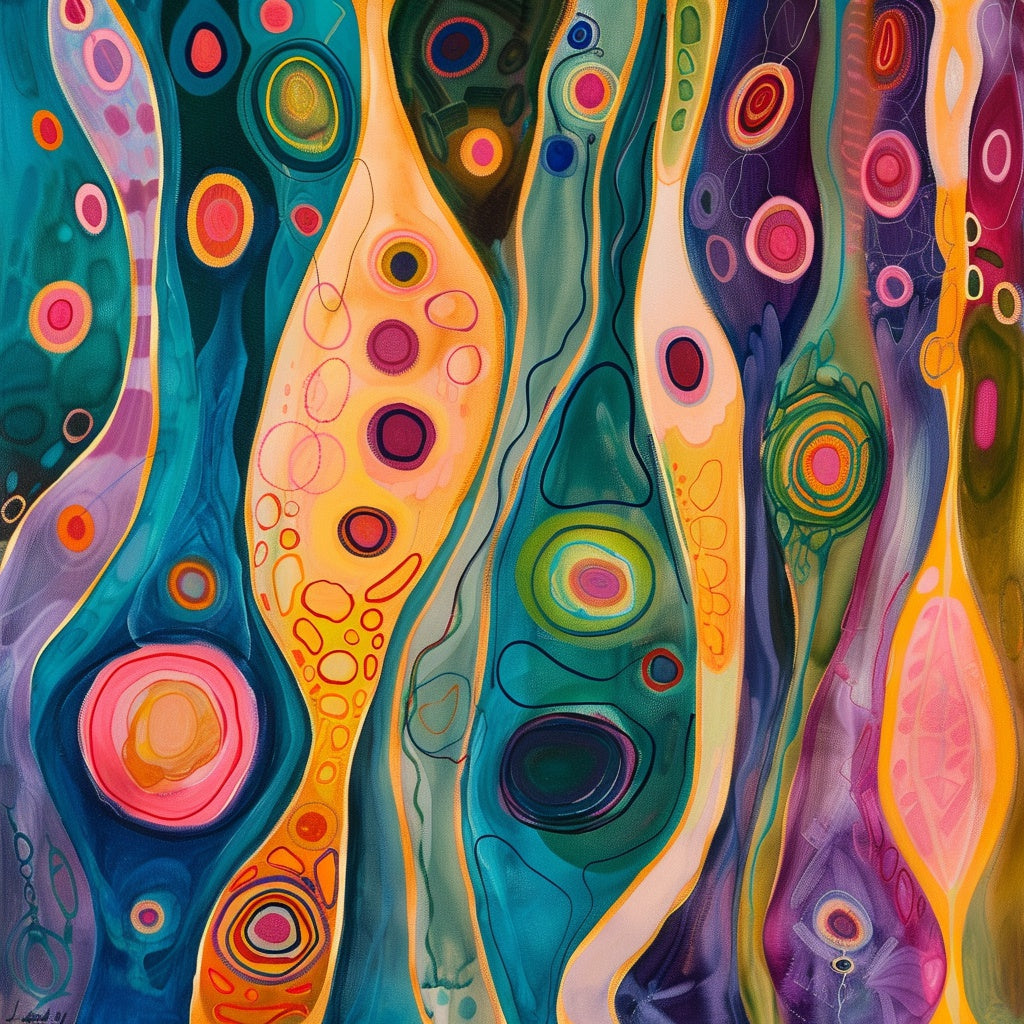Building Your Own AI Art Generator
Artificial intelligence (AI) is revolutionizing the world, and one of its most captivating applications lies in the realm of art. AI art generators can produce stunning, original pieces, making art creation more accessible [1]. These generators are becoming increasingly popular, offering artists and hobbyists new tools for creative expression [1]. This article explores the methods, projects, and techniques for creating your AI art generator.
Table of Contents
- Methods for Creating AI Art Generators
- Open-Source AI Art Generator Projects
- Tutorials on Building AI Art Generators
- Prompt Engineering
- Research Papers on AI Art Generation
Methods for Creating AI Art Generators
AI art generators use deep learning algorithms to create images from text prompts [2]. These algorithms learn from extensive art datasets, identifying patterns and styles [2, 3]. Two popular methods are Generative Adversarial Networks (GANs) and Variational Autoencoders (VAEs) [2].
Generative Adversarial Networks (GANs)
GANs use two neural networks: a generator and a discriminator [4]. The generator creates images while the discriminator evaluates their realism. This iterative process continues until the generator creates images that are difficult to distinguish from real ones [4].
Think of it like a forger and an art expert. The forger (generator) tries to create fake paintings, while the expert (discriminator) tries to spot the fakes. Over time, the forger gets better at creating convincing forgeries, and the expert gets better at spotting them. Eventually, the forgeries become nearly indistinguishable from real paintings.
Variational Autoencoders (VAEs)
VAEs simplify and reconstruct images, which makes them easier to train than GANs. However, they may not achieve the same level of detail as GANs [4].
If GANs are like a forger and expert, then VAEs are like a sketch artist and a restorer. The sketch artist simplifies an image and creates a rough sketch. The restorer tries to recreate the original from this sketch. It might not be perfect, but it is a good representation and easier to work with than a perfect copy.
The choice between GANs and VAEs depends on the project's needs. GANs are often better for realistic, high-quality images, while VAEs are more stable and easier to train [3]. It is a trade-off between image quality and training complexity [3]. Also, the AI art model results depend on the data it is trained on [3]. For instance, a model trained in Impressionist paintings will generate images with a similar style, while a model trained in photographs will produce more realistic images [3].
Open-Source AI Art Generator Projects
Several open-source AI art generator projects provide a starting point for building your own generator [5]. These projects offer a foundation for understanding how AI art generators work, allowing you to explore, modify, and add features [5]. Here are some of the notable open-source projects:
- Stable Diffusion: A leading open-source AI image generator that creates high-quality images from text prompts [5]. It is known for handling complex scenes and abstract concepts, efficient processing, and a user-friendly interface [5]. It also provides a high degree of customization [6].
- OpenJourney: An open-source AI image generator that supports a wide range of styles and themes [5]. It provides a seamless experience and is adaptable to diverse visual content creation [5].
- DeepFloyd IF: An open-source generative AI model that is known for its high-quality image generation capabilities [5]. It uses advanced algorithms, focuses on maintaining image quality, and offers customization options [5].
- InvokeAI: A free, open-source text-to-image generator based on the Stable Diffusion model [5]. It offers image-to-image translation, outpainting, and inpainting [5].
- Craiyon (formerly DALL-E Mini): An open-source alternative to DALL-E 2. It offers similar functionality to DALL-E 2 but with less accurate renditions [5].
Stable Diffusion is notable for its open-source nature and flexibility. Users can download and run it locally, set up their own model, access the API, or use platforms like Clipdrop and DreamStudio [6].
These AI art generators have a variety of applications: generating hero images for blog posts and articles, creating social media posts and marketing materials, generating slide decks and storyboards, and creating personalized images for customers [2, 6].
Tutorials on Building AI Art Generators
Online tutorials guide you through building an AI art generator [7]. These tutorials often use deep learning libraries like TensorFlow and PyTorch [7]. Here are the key steps involved:
Choose Your Tools and Libraries
Select tools and libraries. TensorFlow and PyTorch are popular choices for building neural networks because of their documentation, tutorials, and community support [7].
Set Up Your Development Environment
Decide whether to develop locally or use cloud services. Local development gives you control but requires powerful hardware. Cloud services provide scalability and pre-configured environments [7].
If you're building a car, you can either build it yourself from scratch in your garage (local development) or use a factory that has all the tools ready (cloud service).
Design the User Interface
Create a user-friendly interface that is simple, aesthetic, and easy to navigate. Use clear labels and intuitive layouts [7].
Think of it like designing a website. You want it to be easy for visitors to find their way around and use the features provided.
Process Text Prompts
Use tokenization and encoding to process user-provided text prompts. Tokenization breaks down the text into words, and encoding converts these words into numerical vectors that the AI can understand [7].
If you are giving instructions to a person who only understands numbers, you have to convert your instructions into numbers. Tokenization and encoding are how AI does that.
Train Your Model
Train your AI model on a large dataset of images. Ensure the dataset is diverse and relevant to the styles you want to generate. Curate the dataset carefully, selecting high-quality images that match your desired themes. Regularly update the dataset to keep your generator producing fresh results [7].
Training your model is like teaching a child. You provide examples, and they learn from those examples. The more diverse and relevant the examples, the better the learning.
Generate Images
Use your trained model to generate images based on user prompts. Experiment with different platforms and art styles to find what works best [7, 8].
Refine and Improve
Continuously refine and improve your generator based on user feedback and new research. Set up feedback mechanisms and explore new techniques to enhance the quality and creativity of your generator [7].
Just like any skill, AI art generation can be refined and improved with practice, feedback, and the application of new research and methods.
Prompt Engineering
Prompt engineering is crucial for generating high-quality AI art [9]. This involves crafting effective prompts that guide the AI toward the desired output. This requires an understanding of how the AI interprets language and generates images. Experimentation is key to mastering prompt engineering [9].
When generating images, it's essential to create effective prompts that clearly explain your vision [8, 10]. Use strong keywords and descriptors, and avoid vague language [10]. To further refine your prompts, consider these techniques [10, 11]:
- Add quotation marks: Group together words that belong together with quotes to ensure the AI understands the intended meaning [10, 11].
- Specify elements to avoid: Use keywords like "avoid" to exclude certain elements from the generated images [10, 11].
- Adjust style strength: Control the influence of a specific art style on the generated image [10, 11].
- Fine-tune the prompt's effect: Guide the AI on how closely you want it to stick to your prompt [10, 11].
Midjourney, a popular AI art generator, offers features like upscaling and generating variations of images [9, 12]. Upscaling increases the resolution and detail of an image, and generating variations explores different interpretations of the same prompt [9, 12].
Research Papers on AI Art Generation
For a deeper understanding of AI art generation techniques, explore research papers [11]. These papers provide valuable insights into the technical aspects of AI art generation and help you develop more advanced and innovative generators [11]. Some key research papers include:
- "Generative Adversarial Networks" by Ian Goodfellow et al.: This foundational paper introduces GANs, a key architecture used in AI art generation [11, 13].
- "A Neural Algorithm of Artistic Style" by Leon A. Gatys, Alexander S. Ecker, and Matthias Bethge: This paper describes how neural networks can be used to separate and recombine content and style in images [11, 13].
- "The Creative Adversarial Network: Generating 'Art' by Learning About Styles and Deviating from Style Norms" by Ahmed Elgammal et al.: This paper introduces the Creative Adversarial Network (CAN), a model that generates art by learning and deviating from styles [11, 13].
- "Zero-Shot Text-to-Image Generation.": This paper inspired the LAION-5B database used to train Stable Diffusion models [11, 13].
- "Deep Unsupervised Learning using Nonequilibrium Thermodynamics.": This paper covers the diffusion process, a significant breakthrough in generative AI quality [11, 13].
These papers delve into the mathematical and algorithmic underpinnings of AI art generation and are useful for a more detailed understanding of the subject.
Creating an AI art generator is challenging but rewarding. By exploring the methods, open-source projects, and techniques discussed in this article, you can gain the knowledge and tools necessary to develop your own AI art generator [14]. AI art generators democratize art creation, making it more accessible and efficient [1, 14]. They also offer new avenues for artistic expression, serving as valuable tools for artists and creatives in different fields [14].
Conclusion
As AI technology advances, the relationship between AI and human creativity will evolve. AI art generators are not intended to replace human artists but to augment and enhance creativity [15]. By embracing responsible development and collaboration, we can harness the power of AI to unlock new possibilities in art and push the boundaries of creative expression [15].
AI art generation is a fascinating field with many areas for further exploration and innovation. Whether you are an artist, hobbyist, or technologist, the journey of building your own AI art generator can be incredibly insightful. By staying informed and engaged, you can be part of this exciting transformation of the art world.
Footnotes
[1] Using AI Tools to Create Art - AI Tools for Students - Research Guides - LibGuides, accessed January 30, 2025, https://uvu.libguides.com/ai-tools-students/art
[2] The top AI art generators | Zapier, accessed January 30, 2025, https://zapier.com/blog/ai-art-generator/
[4] www.elegantthemes.com, accessed January 30, 2025, https://www.elegantthemes.com/blog/design/how-to-make-ai-art#:~:text=AI%20art%20generators%20employ%20deep,%2C%20colors%2C%20and%20artist%20techniques.
[3] AI Art Generator - ijrpr, accessed January 30, 2025, https://ijrpr.com/uploads/V4ISSUE12/IJRPR20180.pdf
[5] (PDF) Artificial Intelligence in Art Generation: An Open Issue - ResearchGate, accessed January 30, 2025, https://www.researchgate.net/publication/377558677_Artificial_Intelligence_in_Art_Generation_An_Open_Issue
[6] How to Make an AI Art Generator Like MidJourney: How it Works, Its Costs, and Processes, accessed January 30, 2025, https://litslink.com/blog/how-to-make-an-ai-art-generator-like-midjourney
[7] 5 WAYS To Get Started With AI ART [Beginner's Guide 2023] - YouTube, accessed January 30, 2025, https://www.youtube.com/watch?v=zxnXpSfoXhQ
[10] Top 8 Open-Source AI Image Generators of 2024 - PageOn.ai, accessed January 30, 2025, https://www.pageon.ai/blog/open-source-ai-image-generators
[9] Open-source AI Image Generators - Browsee, accessed January 30, 2025, https://browsee.io/blog/open-source-ai-image-generators/
[11] How to make AI art - step-by-step guide - Adobe Firefly, accessed January 30, 2025, https://www.adobe.com/products/firefly/discover/how-to-make-ai-art.html
[8] How to Create AI Art: Your Ultimate Guide | Skillshare Blog, accessed January 30, 2025, https://www.skillshare.com/en/blog/how-to-create-ai-art-your-ultimate-guide/
[12] Complete Beginners Guide to AI Art - [MidJourney AI Tutorial] - YouTube, accessed January 30, 2025, https://www.youtube.com/watch?v=NRrC0ZaZO_4
[13] Are there any books or papers that go into how AI images are generated? - Reddit, accessed January 30, 2025, https://www.reddit.com/r/DefendingAIArt/comments/1dslmqs/any_books_or_papers_that_go_into_the_process_of/
[16] Generative artificial intelligence, human creativity, and art | PNAS Nexus - Oxford Academic, accessed January 30, 2025, https://academic.oup.com/pnasnexus/article/3/3/pgae052/7618478
[17] All creatives should know about the ethics of AI-generated images | Lummi, accessed January 30, 2025, https://www.lummi.ai/blog/ethics-of-ai-generated-images
[18] Ethical Considerations in AI Art | Art and Technology Class Notes - Fiveable, accessed January 30, 2025, https://library.fiveable.me/art-and-technology/unit-15/ethical-considerations-ai-art/study-guide/oAUKCsjqXxyCrtLN
[14] The Ethical Implications of AI on Creative Professionals | by Dirk Steynberg - Medium, accessed January 30, 2025, https://bytemedirk.medium.com/the-ethical-implications-of-ai-on-creative-professionals-38ec6ed983e2
[15] AI Art & the Ethical Concerns of Artists - Beautiful Bizarre Magazine, accessed January 30, 2025, https://beautifulbizarre.net/2023/03/11/ai-art-ethical-concerns-of-artists/



Leave a comment (all fields required)